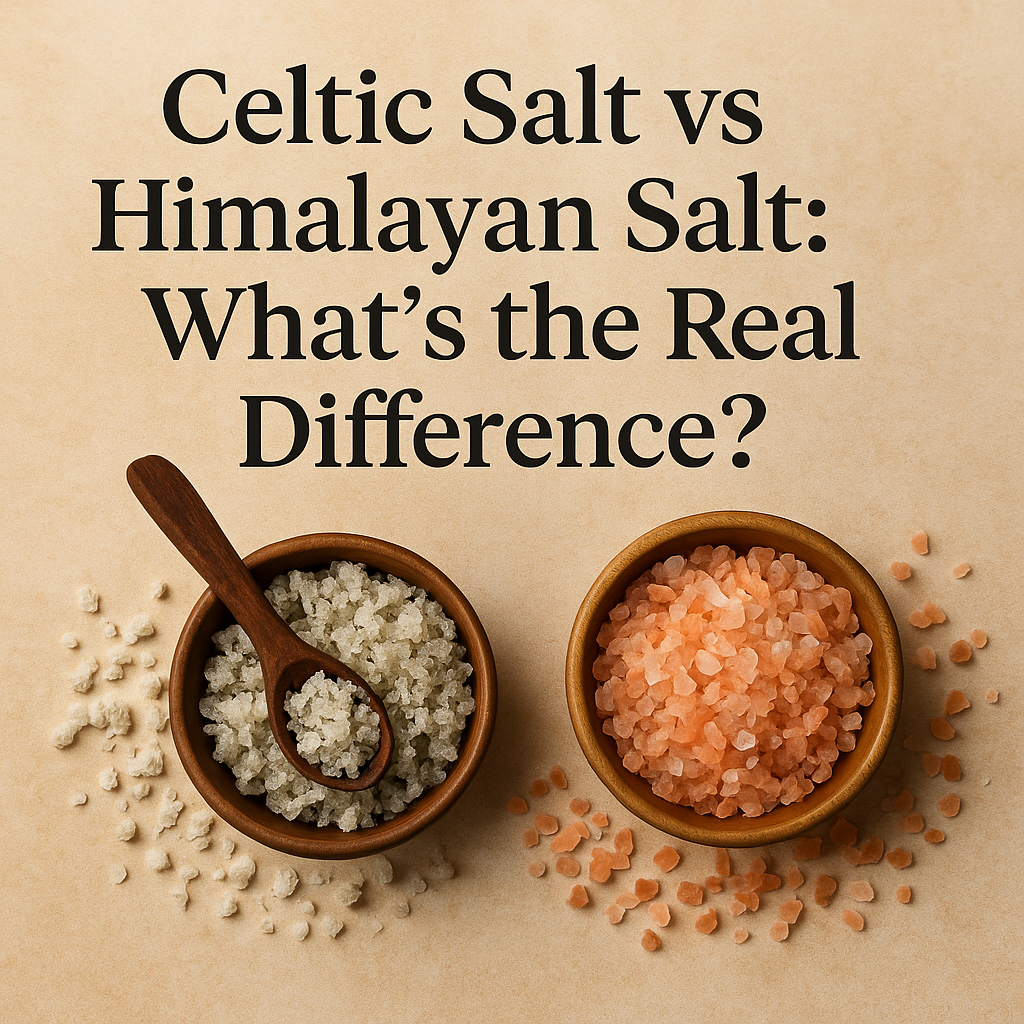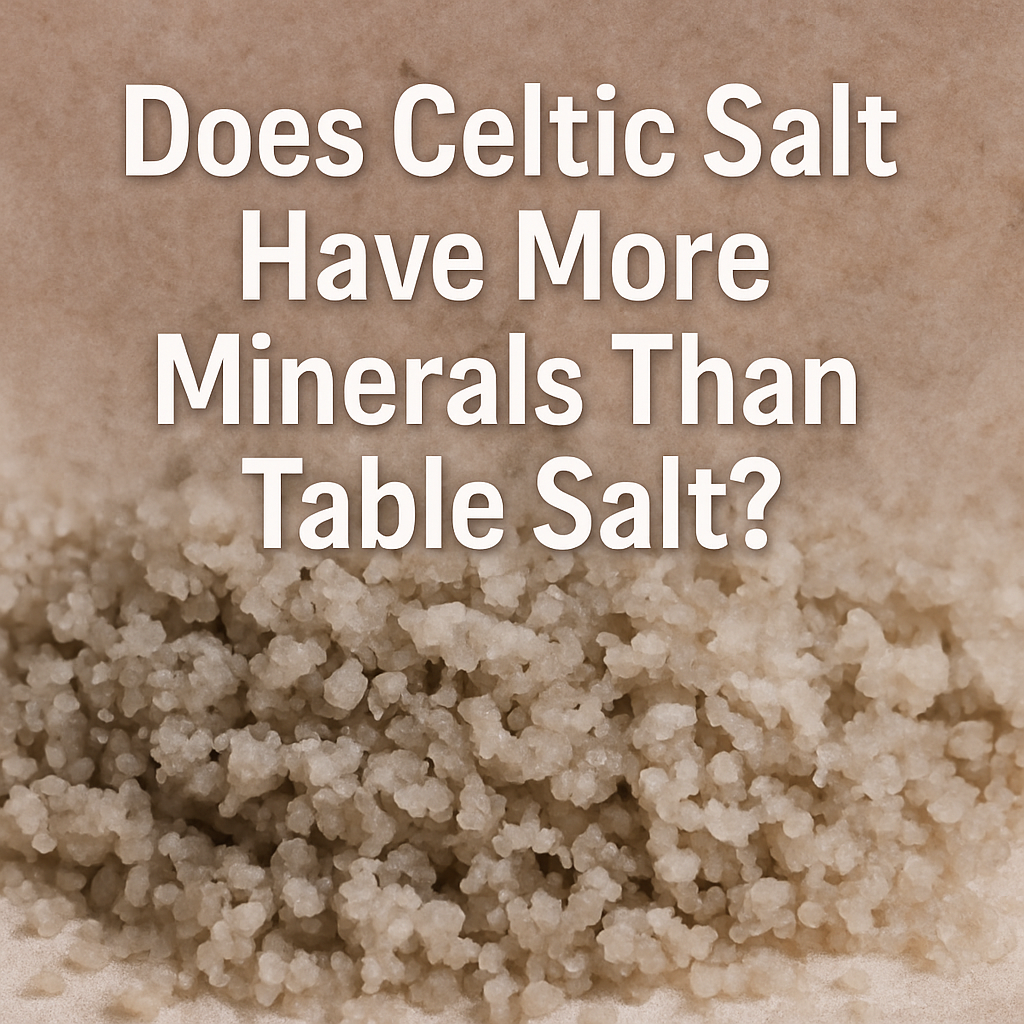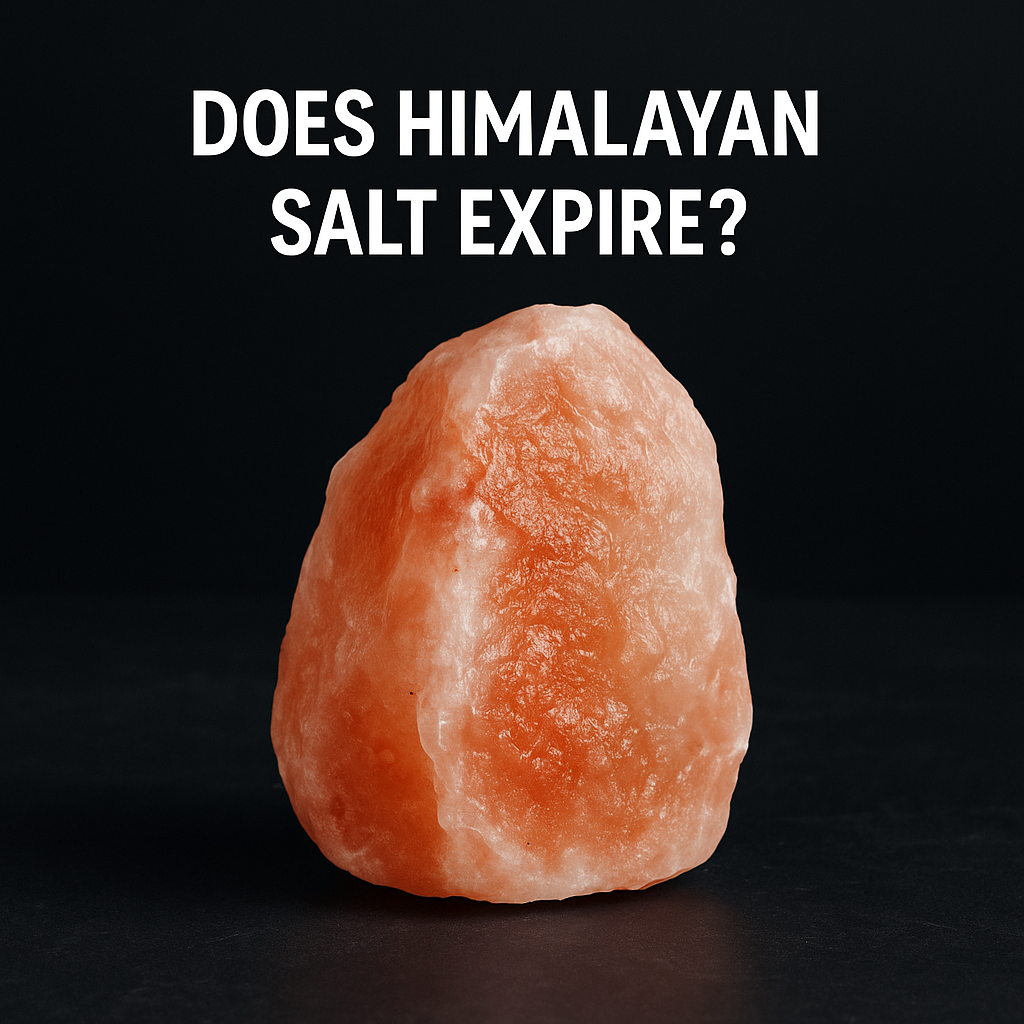You’ve probably seen both Celtic salt and Himalayan pink salt on shelves, social media, and health blogs. The comparison Celtic salt vs Himalayan salt comes up frequently. People wonder: are they really that different?
Which one is smarter to use? In this post, you'll walk through what they are, how they act differently in real life, what people often get wrong, and when one might be better for you.
What is Himalayan Salt?
Himalayan pink salt is rock salt mined mainly in Pakistan, known for its distinctive rosy hue due to trace minerals like iron, calcium and magnesium.
Although it contains slightly more minerals than regular table salt, it is still over 95% sodium chloride, which means its health advantages are minimal.
Use it for flavour or as a finishing touch, but don’t expect it to replace whole-food mineral sources or reduce sodium risks
What is Celtic Salt?
Celtic salt, or Celtic sea salt, comes from the coastal waters of Brittany, France, where seawater is naturally evaporated in clay ponds by the sun and wind. This slow, traditional method keeps its mineral structure intact and gives the salt its signature moist, gray tone. The subtle color comes from the clay beds beneath the ponds that leave behind traces of essential minerals.
What makes Celtic salt different from other sea salts is its natural moisture content. It can hold up to 10–15% water, which helps it stay soft and enhances how it dissolves on food. This moisture also allows some of its minerals to exist in ionic form, making them more active when mixed into food or water. Because of this, many chefs notice that Celtic salt “melts” into warm dishes more smoothly and adds a deeper, rounded flavor instead of just sharp saltiness.
Celtic salt is also naturally air-dried and never kiln-heated, which preserves delicate minerals that can be lost during high-temperature drying. It contains small yet valuable traces of magnesium, calcium, potassium, zinc, and iron, all contributing to its mild, oceanic taste.
Unlike refined salt, it has no additives or bleaching agents. That’s why it’s slightly damp, occasionally clumpy, and full of character, a true reflection of the coastal environment it comes from. For pure flavor and natural balance, Celtic salt stands out as one of the most authentic sea salts available.
Mineral profiles and realistic impact
One of the most talked-about points when comparing Himalayan salt vs Celtic sea salt is their mineral content. Many people believe these salts are “healthier” because they contain trace minerals, but the truth is more balanced than marketing often suggests.
Both salts do include minerals beyond sodium chloride such as magnesium, calcium, potassium, and iron, but the actual amounts are very small. Some brands claim figures like “84 minerals” in Himalayan salt or “75 minerals” in Celtic salt, yet these trace elements exist in quantities too tiny to affect your overall nutrition.
In simple terms, using salt as a source of minerals isn’t practical. You’d have to consume unsafe levels of salt for those trace elements to make a measurable difference. What actually benefits your health is reducing refined salt, staying hydrated, and maintaining a balanced diet.
A small difference exists: the natural moisture in Celtic sea salt can help preserve some minerals in ionic or colloidal form, which may slightly improve absorption. Some brands even use this property to create electrolyte blends, but the impact remains minimal. Similarly, Himalayan salt’s mineral balance adds mild variety in taste and color, not significant nutritional change.
Taste, usage, and practical examples
Because of their moisture, texture, and mineral makeup, they behave differently in everyday cooking.
-
Flavor showoff: On delicate foods like fresh tomatoes, melon, steamed vegetables, or grilled fish, Celtic salt’s briny punch can stand out. Its damp crystals cling, letting you feel a mineral “pop.”
-
Even seasoning: Himalayan pink salt, being dry and granular, disperses more evenly in dough, sauces, and stews. It melts cleanly and doesn’t clump.
-
Finishing vs cooking: Use Celtic as a finishing salt or sprinkle at the end. Use Himalayan for cooking, baking, brining, or even salt blocks.
-
Salt block cooking: Himalayan rock salt can be cut into slabs or blocks for grilling, baking, or serving (cold or hot). The block imparts gentle saltiness and holds heat or cold. Celtic salt is harder to use this way because of its moisture content.
Example: for a fresh caprese salad (tomato, basil, mozzarella), sprinkle a little Celtic salt at the end so you feel that moist crunch. But for the tomato sauce you simmer for an hour, dissolve Himalayan salt early so it integrates smoothly.
Another tip: if your local climate is humid, Celtic salt may clump. Store it in a salt cellar or jar that limits moisture exchange.
Hydration, Electrolytes, and Common Claims
You’ll often see trending ideas like “Celtic salt vs Himalayan salt for hydration” or tips saying “add a pinch of salt to your water for better absorption.” These sound appealing, but science paints a more realistic picture.
Many wellness influencers recommend adding Celtic salt to water for electrolyte balance. However, medical research shows that for most healthy people, this makes little difference. The human body already regulates hydration and electrolyte levels efficiently without extra salt water.
While Celtic sea salt contains small amounts of magnesium and trace electrolytes, the levels are too low to compete with food sources like leafy greens, nuts, or fruits such as bananas. These foods offer electrolytes in much more bioavailable quantities.
That said, in situations involving intense sweating, dehydration, or illness, a tiny pinch of high-quality salt (Celtic or Himalayan) mixed with glucose or juice can help form a simple rehydration drink. But this applies to occasional needs, not daily routines.
If you come across claims of “Celtic salt vs Himalayan salt health benefits” that promise major hydration improvements, treat them with skepticism. The true hydration heroes are water, electrolytes from real foods, and consistent fluid intake, not salt alone.
Risks, moderation, and iodine
No matter how natural your salt is, too much sodium is still harmful. High intake increases blood pressure, burdens the kidneys, and raises the risk of heart disease or stroke, whether it’s Celtic sea salt, Himalayan pink salt, or table salt.
-
Excess sodium affects blood pressure and heart health.
-
Unrefined salts usually lack iodine unless fortified.
-
Get iodine naturally from seafood, dairy, or seaweed if you avoid iodized salt.
-
Keep sodium intake below 2,300 mg per day (about one teaspoon).
Both Himalayan and Celtic salts are great for flavor but not a free pass for more sodium. If you use them exclusively, check that your diet includes adequate iodine for thyroid health. Balance and moderation matter more than the type of salt you choose.
When to use which
Here’s how to decide in real life:
-
Want strong mineral snap on a finished dish? Use Celtic salt.
-
Need a dependable salt for cooking, baking, brine? Use Himalayan salt.
-
Want a salt block or decorative or spa use? Himalayan rock salt fits nicely.
-
Trying a salt-water electrolyte drink? Use a tiny pinch of either, but don’t expect big effects.
-
Concerned about iodine intake? Don’t rely on Celtic or Himalayan salt for that — get iodine elsewhere.
-
Worried about clumping in humid place? Himalayan wins because it’s dry.
You can also rotate: some days use Celtic, some days Himalayan. Your diet’s mineral variety will come largely from real food, not salt.
Hidden gems few talk about
-
Because Celtic retains moisture, in humid climates it may absorb additional moisture and clump. Storing it airtight is more critical.
-
The colloidal mineral content (tiny particles suspended because of moisture) in Celtic salt might make those trace minerals slightly more accessible, though the effect is mild.
-
Himalayan salt mining must deal with mining logistics, energy use, and transport, so its carbon footprint can be higher than sun-evaporated Celtic salt in some supply chains.
-
If a salt is over-advertised as having “84 minerals” or “cures disease,” that’s marketing, not science.
Final thoughts
In the battle Celtic salt vs Himalayan salt, there’s no dramatic winner. Each is a fine, natural salt with its own texture, moisture level, and vibe. Use both wisely. Focus more on reducing refined salt, eating rich mineral foods, staying hydrated, and seasoning smartly.
If you’re curious to try premium Himalayan pink salt products or mix it with Celtic on a flavor test, Himalayan Salt Direct has a carefully curated range.
Browse our pure Himalayan pink salt, salt blocks, and more. Taste them side by side. Decide what your tongue and meals love.







